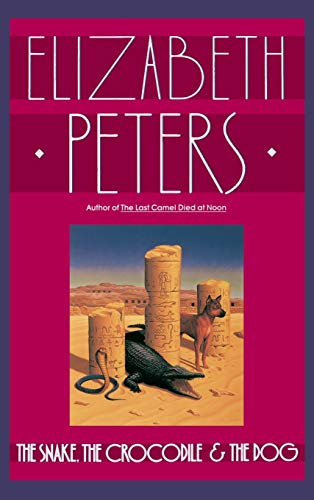
On the other hand, they might be heading towards murder. I’m sure it will be fulfilled in later stories.In Amelia's seventh adventure, she and Emerson take passage on a boat travelling up the Nile, enjoying a second honeymoon while they search for Nefertiti's tomb. But there’s also an intimation of a significant plot point undetected by the narrating sleuth Amelia herself. The resolution of the plot involves multiple “reveals,” the later of which certainly caught me off-guard.

The relief is necessary, in my view, because of the circumstance of Radcliffe Emerson’s traumatic amnesia, which gives this story more tension and sadness than were typical of the earlier volumes. Peters thankfully managed to have the Emersons leave the children in England for the 1898 archaeological expedition to Egypt in The Snake, and the occasional letters from young Ramses provide excellent comic relief, as well as a clever supplementary plot-line. I was a little worried by the addition of yet another dependent to the Emerson household at the end of the previous book, and I wondered how an exciting pace could be maintained in the face of such elaborate parental concerns. On a related issue, the “Editor’s Note” at the beginning refers quite inaccurately to a glossary appendix on “page 339,” evidently failing to account for the revised pagination of the paperback edition I read. The maps are clear, but it’s hard to refer to them, because they are inserted individually in the course of the text, and there is no table or index to note their locations. The occasional line drawings introduced in The Last Camel Died at Noon do not persist in The Snake, but there are still several maps to help the reader understand the path of the expedition.

This time, she introduces Leo Vincey–a character whose name is lifted from the protagonist of Haggard’s She. The Snake, the Crocodile, and the Dog also continues author Peters’ metafictional jockeying of material from H.


The feature reminds me of nothing so much as 1960s and 70s Marvel comic books, with the continuity cross-references jammed into the corners of panels. It is hard to imagine enjoying it much without having read several of the earlier books, especially The Crocodile on the Sandbank, Lion in the Valley, and The Last Camel Died at Noon. In fact, this text frequently deploys the advertising footnote: dropping the title of a previous novel into the bottom margin of the page in order to explicate an allusion to earlier adventures. This seventh volume of the adventures of Victorian Egyptologist Amelia Peabody Emerson is very much a serial installment. Hermetic Library Fellow T Polyphilus reviews The Snake, the Crocodile, and the Dog by Elizabeth Peters.


 0 kommentar(er)
0 kommentar(er)
